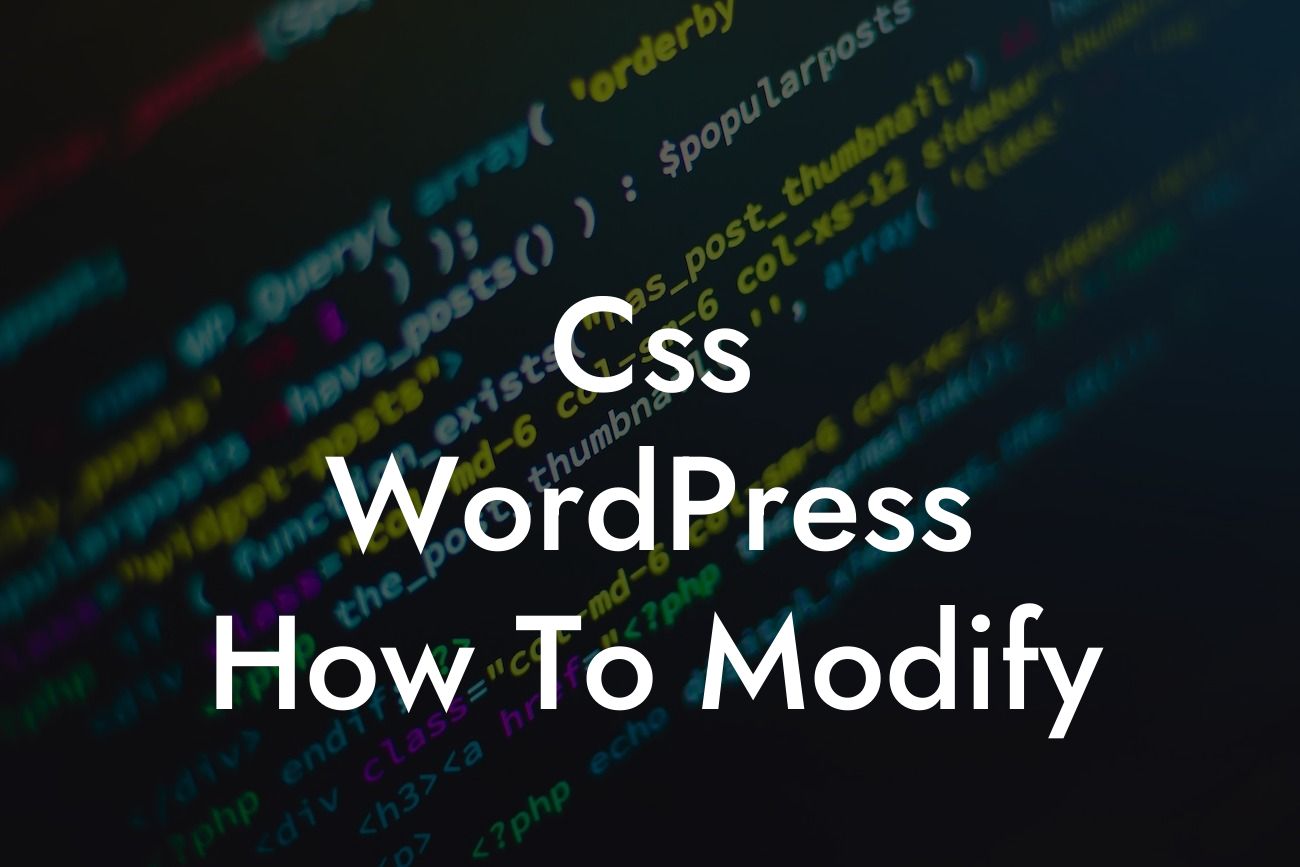Many small businesses and entrepreneurs rely on WordPress websites to establish their online presence. While WordPress offers a plethora of customization options, modifying the CSS (Cascading Style Sheets) can elevate your website to the next level. In this article, we'll guide you through the process of modifying CSS in WordPress, empowering you to create a unique and visually appealing website.
CSS is a coding language that controls the visual appearance of your website. By modifying the CSS, you can change colors, fonts, spacing, and other stylistic elements to match your brand identity. Let's dive into the step-by-step process of modifying CSS in WordPress:
1. Identify the CSS File: Log in to your WordPress dashboard and navigate to the Appearance tab. Select the "Editor" option, which will display the list of theme files. Look for the "style.css" file, which contains the CSS code for your website.
2. Use a Child Theme: Before making any modifications, it's crucial to create a child theme. This ensures that your customizations won't be lost when you update your WordPress theme in the future. Create a child theme by following the WordPress Codex documentation or using a plugin like "Child Theme Configurator."
3. Familiarize Yourself with CSS Syntax: CSS follows a specific syntax, consisting of selectors, properties, and values. Selectors identify the HTML elements you want to style, properties specify the desired changes, and values define the characteristics of those changes. For example, to change the font color of all headings, you would use the selector "h1, h2, h3" and set the "color" property to your desired value.
Looking For a Custom QuickBook Integration?
4. Use Inspector Tools: Modern web browsers provide developer tools or inspector tools that allow you to inspect and modify CSS instantly. Right-click on any element of your website and select "Inspect" or "Inspect Element." The inspector tool will display the HTML and CSS code associated with that element. Experiment with changes in the inspector tool before implementing them permanently.
5. Modify the CSS: Once you're confident with the changes you want to make, head back to the WordPress Editor and locate the "style.css" file within your child theme. Use HTML H2 and H3 headings tags to organize your modifications and ensure clean, readable code. Add your custom CSS code below the existing code, save the changes, and refresh your website to see the modifications taking effect.
Css Wordpress How To Modify Example:
Let's say you want to modify the background color of your website's header. First, inspect the header element using your browser's inspector tool to identify the appropriate CSS selector. Once identified, add the following code within your child theme's "style.css" file:
```CSS
h1.site-title a {
background-color: #ff0000;
color: #ffffff;
}
```
In this example, the CSS selector "h1.site-title a" targets the header element containing the site title. The code sets the background color to red (#ff0000) and the text color to white (#ffffff).
Congratulations! You have now learned how to modify the CSS in your WordPress website. By leveraging the power of CSS, you can create a visually stunning website that perfectly aligns with your brand. Don't forget to explore other guides on DamnWoo, where we provide valuable insights and resources to boost your online success. And if you're looking for an added edge, try one of our awesome WordPress plugins to supercharge your website even further. Share this article with others who can benefit from it and let us know your thoughts in the comments section below!













